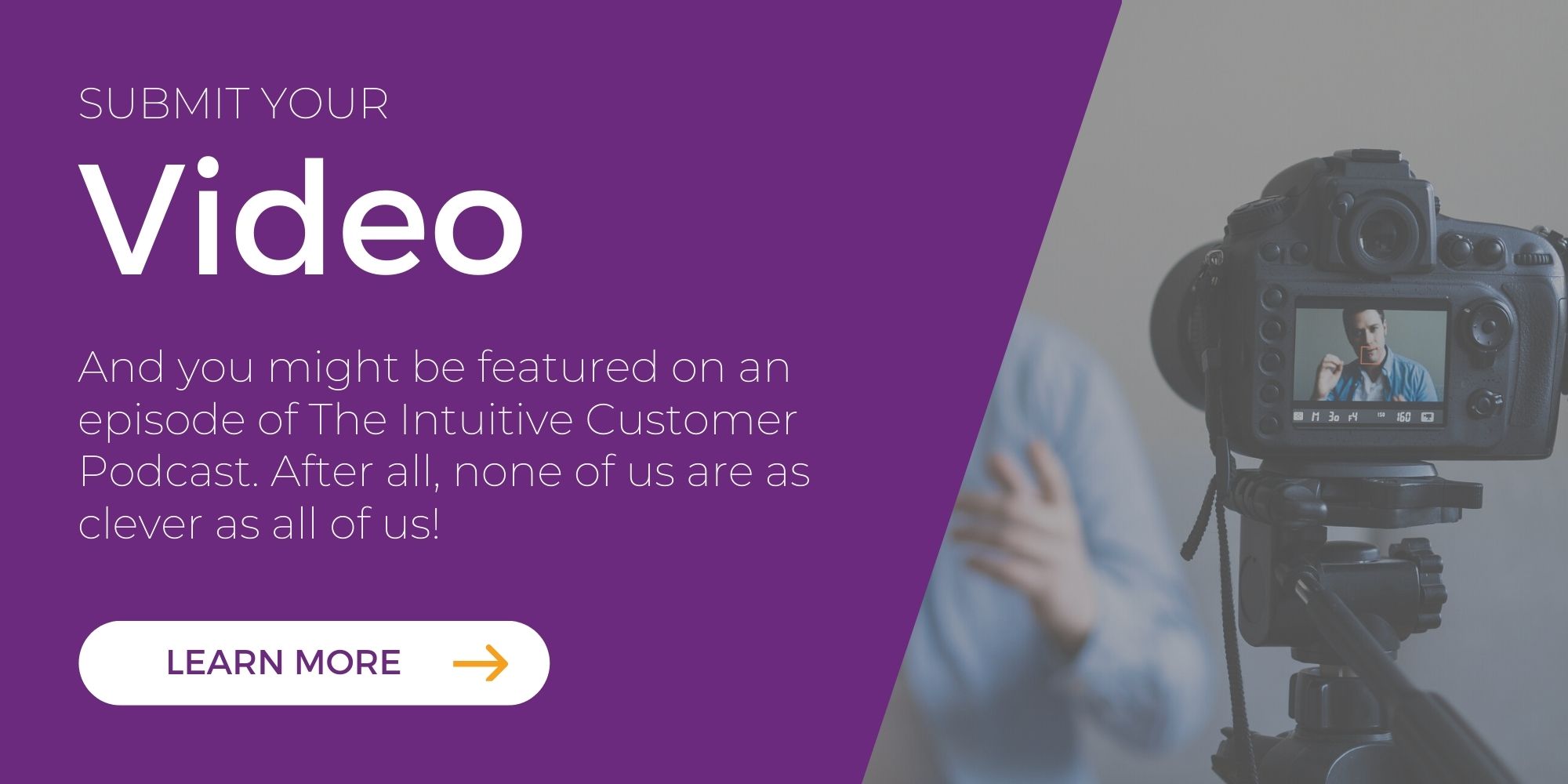Learn more about Colin Shaw: Join over 80,000 people on our LinkedIn Newsletter list or visit our website for more great podcast episodes.
Listen to the podcast:
Customer research is an essential part of managing their experiences to foster customer loyalty. However, many firms look at customer research as a one-and-done project. Worse, they often don’t know what to ask to find out what they want to know. Today, we look at what is essential to do with your research, and how to do it, and in this article created in partnership with YouGov, the importance of getting results as fast as possible.
Our readers enjoy $ 500 off their first YouGov survey. Click here www.yougov.com/icp
Seven Years Is a Long, Long Time Regarding Research Relevancy
Many, many times I have asked clients to see their most current customer research and they hand me something that they did seven years prior. Then, I get to tell them that their research is out of date, and they need to update it.
Seven years is a long time relative to customer markets. Consider the previous seven years and how they changed the world.
We had a pandemic for nearly two years that stopped the world and devastated businesses.
The pandemic resulted in an acceleration of the digital transformation of analog experiences at an unprecedented pace, changing the way people communicate, work, and shop.
Next, double-digit inflation in all areas of consumer goods has wreaked havoc on consumer spending habits.
When grocery bills look like what people used to pay for car payments and car payments look like what people used to spend on mortgages, people don’t have as much to spend. Moreover, their responses to a survey question might be a little different.
Customers Don’t Always Know What They Want, But Their Answers Say a Lot
Another common mistake is trusting customer answers to give you the proper results. However, regular readers will recall that people don’t always know why they do what they do. Or they know, but don’t want to admit it on a survey. So, how can we trust that their answers are telling us what is really going on?
That said, those answers are telling you something interesting and important, even if it’s not necessarily what you were asking. Moreover, those results will change over time, which tells you even more about the market.
For example, my podcast partner and I did a survey using YouGov’s self-service platform. YouGov is a highly regarded survey organization in the UK. We put photos of ourselves up and asked survey respondents to say at which of several provided restaurants we were likely to eat lunch.
The results were funny. The respondents said I was more likely to eat at Panera and my podcast partner was more likely to eat at Chipotle. These responses were based solely on our pictures, so they do not mean anything, per se, but they do reveal a lot about the respondents’ perception of the restaurant brand.
Moreover, they can tell us more over time. Suppose we did this again in a few months and the gaps between our indexes were much smaller or we both came out the same amount of likely to eat at one of the options. Those results wouldn’t indicate that we were or weren’t more likely to eat at the restaurant. They would indicate who the customers associated as the target customer for the restaurant’s brand promise.
New Tools Make it Easier to Stay Relevant
Another mistake organizations make is they don’t spend enough time gathering data. My guess is they don’t want to invest the time. However, today’s tools are making that less of a problem as we experienced when we tried our partners’ platform.
First, the YouGov platform makes it possible to get your answer back within an hour. Also, you don’t have to go through a research provider and the bidding, vetting, and selection process associated with choosing one. YouGov’s new direct-to-consumer feature allows anyone to sample their surveying tools and conduct research directly. It’s also easy to use. (Best of all, since we are partnering with them, you can get $500 off your first survey. Just go to www.yougov.com/icp.)
Self-service is interesting—and intimidating to the inexperienced. After all, much finessing goes into writing a proper survey. How you phrase the question, the sequence of them, the pictures you show, and many other factors can all affect what the respondent thinks or feels, and, perhaps most importantly, responds.
However, developing systems to use can help you. For example, all surveys require consideration of the following three things:
- Writing the questions
- Programing the survey for distribution
- Finding the respondents
You can follow this system yourself. As you gain experience, you will develop a more detailed system and more knowledge on what works and what doesn’t.
However, you can also leverage tools that have optimized the system for you. The YouGov platform was good on all three of these areas. The interface is intuitive, allowing one to drag and drop different question types that are pre-programmed. After you finish, your survey is reviewed by an expert before they publish it. In our case, they told us to include an answer option of “none of the above,” or to change the order of the questions.
Plus, they have a massive pool of survey respondents. These people who have agreed to respond, and to submit to an extensive background check. That means YouGov has all the demographic, psychographic, and behavioral information about the respondents that you can use to understand and interpret their responses.
So…What Should You DO to Master the Art of Effective Customer Research?
Research is clearly a great way of finding out what your customers want. Here is a summary of our advice for making the most of it.
- First, develop the skills to do research yourself. It’s great to hire a market research firm and they do great work, which is sometimes appropriate. However, it is empowering to learn how to do research on your own. It also provides a sense of how research is conducted and how to interpret data. The learning curve here is steep but short. What I mean by that is you can feel intimidated at the start, but once you do a few, you improve rapidly. The YouGov platform is excellent help because they provide feedback before you run your survey. I don’t know of any other platforms that do that.
- Second, do not treat this as a one-shot exercise. You’re not going to take this snapshot of what’s going on and then be done with it forever. Research should be frequent, rapid, and specific. Thinking of it as an iterative process helps. In other words, it’s better to take a bunch of small bites of a question over time than to try to take a big gulp of it all at once. Do small things, and do them rapidly, frequently, and specifically.
- Finally, ask indirect questions. You might recall past discussions in the newsletter about the Golden Question. For those that don’t, the Golden Question is the one question really unveils what your customers think. For example, a firm once wanted to know which pet owners would buy premium dog food. Instead of asking them that, they asked if they bought their dog a present on their birthday. If the answer was yes, it indicated that the pet owner would spend more money for the premium pet food. So, determine if there is a way to ask something else that shows you how the customers think.
One of the biggest mistakes people make in research is assuming it is something you do once. They think they will spend millions, conduct a giant survey, receive a thousand-page tome back with cross tabs and endless breakdowns for the data, and possess a comprehensive understanding of what is going on with their customers.
That would be great, wouldn’t it? Unfortunately, that is not how research goes. Instead, research projects are frequent and almost always obsolete after a much shorter time than one might expect. Instead of one big meal, appropriate customer research frequency is more like a bunch of nibbles over a few days.
Speaking of nibbles, if you will excuse me, I could use a few myself. Guess where I am going to go to get it?
Have something to say? We are looking for people to share their new ideas, opinions, thoughts, reports, or statistics in a 5-minute video & audio. We will run this at the show’s top, and Colin will discuss it with his co-host, Professor Ryan Hamilton. This is an excellent opportunity to get your message to a vast audience. Currently, the podcast has 12,000 downloads per month on average!
If you’re interested in submitting, fill out the form here.






